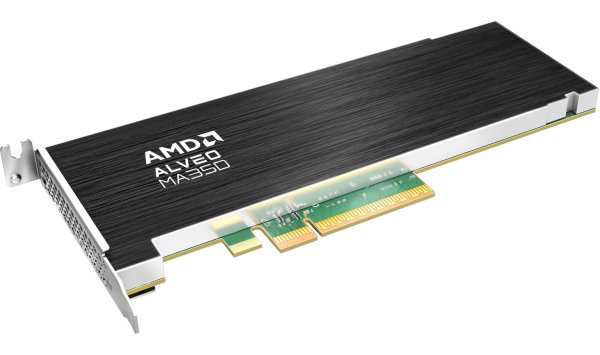Streaming will probably remain a relevant growth market even after Corona. AMD sees the total market revenue (TAM - Total Addressable Market) at more than 200 billion dollars in 2028 - compared to currently about 65 billion. In this TAM, not only game streams on Twitch or YouTube are estimated, but above all server-side cloud gaming as well as the virtual transmission of live desktop surfaces in the cloud.
For a few streams, even consumer graphics cards can be used if you don't want to load your CPU. Just recently,  Nvidia even unlocked more encoding power undocumented. So obviously there is some demand.
Nvidia even unlocked more encoding power undocumented. So obviously there is some demand.
But if you want to encode numerous virtual desktops in real time, you can also use it a house number larger. And (not only) for such massive encoding tasks, AMD has now presented its own hardware solution.

AMD Alveo MA35D - FPGA accelerator for AV1, H.265 and H.264 codecs
The Alveo MA35D is said to be able to encode up to 32 parallel 1080p60 AV1 streams while consuming only 35 watts on average. Four 8K streams at 30 frames per second would also be possible, as well as encoding with H.264 and H.265.
In addition to the low power consumption, the low latency is also said to be remarkable, which AMD enables by using FPGAs over CPUs. Compared to a hard-wired ASIC card, FPGAs also allow subsequent modification of the encoders through firmware updates.
The recommended retail price of the Alveo MA35D is 1,595 excluding taxes. It is scheduled to ship as a PCIe card with a maximum of 50W specified consumption in the third quarter.
However, the MA35D is also exciting as a technology outlook from AMD. Through the acquisition of the FPGA specialist Xilinx, AMD is dovetailing more and more products with  FPGA technology, which enables freely reprogrammable hardware functions.
FPGA technology, which enables freely reprogrammable hardware functions.
Already this summer, the first mobile laptop CPUs  with an FPGA-based AI engine should be available. AMD could possibly also accelerate de- and encoding via this in the future - and perhaps even finally deliver 4:2:2 decoding in 10 bit this way...
with an FPGA-based AI engine should be available. AMD could possibly also accelerate de- and encoding via this in the future - and perhaps even finally deliver 4:2:2 decoding in 10 bit this way...

